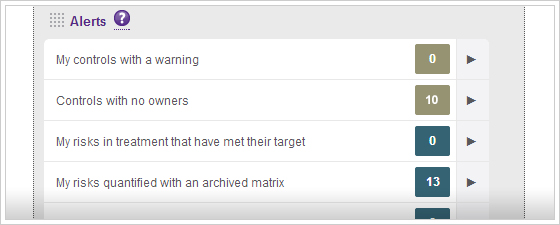Reported May 2 2013, the FAA is expanding the safety data collection capabilities of The Aviation Safety Information Analysis and Sharing (ASIAS) system with the move to open the program to Helicopter operators. With the proven success of ASIAS in reducing accident rates in commercial air space operations, we believe that the ASIAS capabilities will help helicopter operators achieve measurable safety improvements.
Source: Aviation International News » May 2013
May 2, 2013, 5:35 AM
The FAA is planning to expand a new safety data collection and analysis system beyond scheduled air carriers to all elements of the aviation community, including helicopters. The move comes as the helicopter industry formally acknowledged earlier this year that, while it has made considerable progress, it will likely fall short of the International Helicopter Safety Team’s (IHST) goal of reducing the helicopter accident rate by 80 percent by 2016. Industry efforts to date have resulted in a 30-percent reduction since 2005.
The Aviation Safety Information Analysis and Sharing (ASIAS) system collects information from a wide variety of sources, including flight data recorders. Initially, when the program began in 2007, thirteen airlines and the FAA joined the initiative. The FAA’s role is non-punitive. Today, membership has grown to 44 airlines representing 96 percent of commercial airspace operations and 131 safety data sources, according to the FAA. The Mitre Corp. analyzes and safeguards proprietary airline data; integrates it with Mitre’s own aviation safety databases covering weather, radar tracks, airspace and traffic and other public data; conducts studies; and builds analysis capabilities. Airline data is shared over Mitre secure servers and includes pilot safety reports and FDR data. Mitre began delivering safety studies generated by the program to the FAA and stakeholders in 2008. The studies had an immediate benefit, including the redesign of airspace in select regions to thwart false Taws alerts. ASIAS also establishes safety measurement benchmarks that allow individual operators to see where they stack up against the industry as a whole.
The data trove collected to date is huge. It includes 125,000 aviation safety action program reports, 10 million flight operations quality assurance (FOQA) reports, and 50,000 air traffic safety action program reports. Although the system is relatively new, to date, seven of the 76 safety enhancements proposed by the Commercial Aviation Safety Team (Cast) have been derived from ASIAS data. ASIAS also tracks the effectiveness of those enhancements as well as 51 distinct metrics. Twice annually, 500 airline aviation safety professionals share safety information at closed-door “Infoshare” meetings. Issues discussed are linked to ASIAS for early detection and analysis.
Helicopter Applications
ASIAS is scalable to the helicopter industry, particularly in areas where there is a high concentration of operations such as the Gulf of Mexico, according to several sources familiar with the program. Preliminary discussions have already begun with the International Helicopter Safety Team (IHST), said Stan Rose, director of safety for the Helicopter Association International (HAI). Morphing ASIAS for helicopters would involve different metrics and data, but similar analysis tools could be used. “The reason the Gulf is attractive is that it is a big enough [data set] and accounts for approximately 25 percent of the helicopter flight hours in the U.S.,” Rose said.
To a certain degree, major operators in the Gulf are already sharing safety data and other information through the HeliShare program and its quarterly meetings, said Stuart Lau, chairman of the IHST’s helicopter flight data monitoring committee. Lau said that current plans are to integrate HeliShare members and their data fully into ASIAS by the third quarter and add major helicopter EMS providers into the group. “The FAA has funded the rotorcraft segment to be included in ASIAS, and we are currently working with operators on memoranda of understanding and other logistical details.” Lau said Gulf operators are a natural starting point because they have “the most mature flight data monitoring programs. It’s really the beginning stages of ASIAS for us and we are going to continue the quarterly HeliShare meetings. So far it has been successful and at every meeting more events are shared operator to operator. Once we get ASIAS involved we will have the opportunity for directed studies.”
NTSB member Robert Sumwalt told AIN he thinks the application of ASIAS to the helicopter industry will add to safety management initiatives and be a good way to prevent data siloing. “If you are just stove piping and not sharing information” accidents can result. “You need to collect, analyze and disseminate the information,” Sumwalt said, adding that “protocols need to be put in place to make sure that information is not being misused. The ASIAS protocols have been vetted. The air carrier industry has been doing this for a number of years. The ASIAS executive board decides the cases it wants to study and queries its members to check their databases. Nobody at the FAA or at Mitre can tap into member databases. It’s been really successful.”
“This is one of the next steps” the helicopter industry must make to further reduce its accident rate, Sumwalt said. “Until it does it is not going to make any appreciable improvement on the accident record until it is willing and able to go to this next step. The IHST effort has been fairly successful, but if they want to continue the uphill climb, they have to go to the next level, which is something like [ASIAS].”
Sumwalt said that for the helicopter industry to hit a plateau in the accident reduction rate is not unusual, based on the airlines’ experience with safety goals set by Cast, widely acknowledged as the model for the IHST, in the 1990s. “Even that model had to move the goal post a couple of times, but they still did a heck of a lot and they still did make a difference. Good safety is good business. ASIAS is a good model to share information in a non-threatening way.








